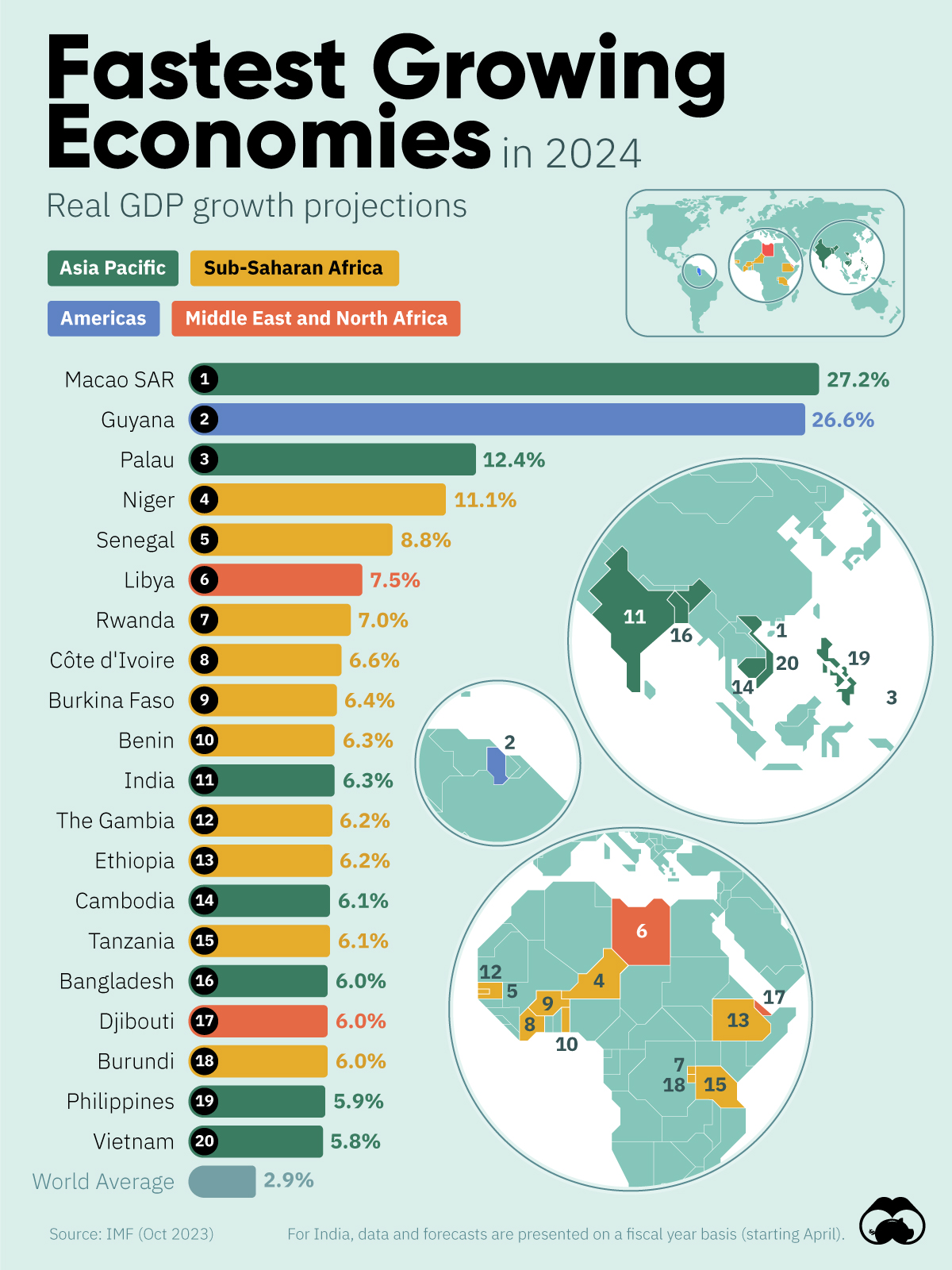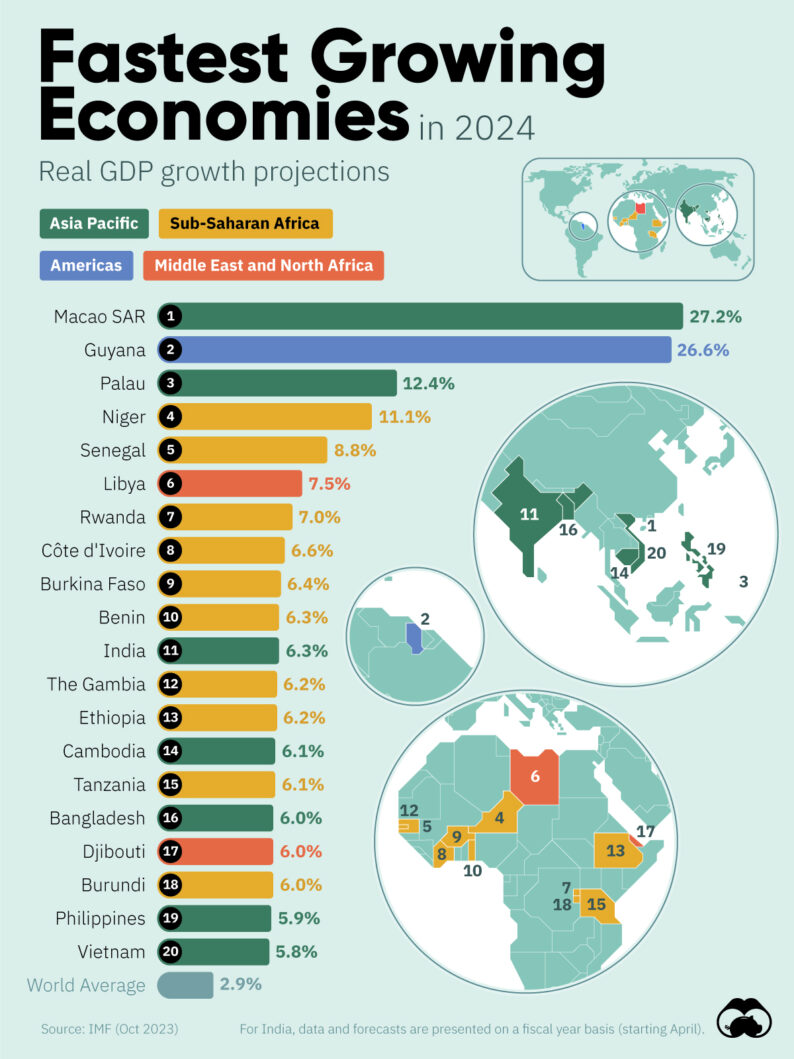
IMF Projections: The Fastest Growing Economies in 2024
Which countries will see the most economic growth in 2024?To answer this question, we’ve visualized GDP growth forecasts from the IMF’s October 2023 World Economic Outlook. Unsurprisingly, many of these countries are located in Asia and Sub-Saharan Africa—two of the world’s fastest-growing regions.
Highlights: Asia Pacific
The fastest-growing economies in Asia are forecasted to be Macao (+27.2%), Palau (+12.4%), and India (+6.3%).
Highlights: Sub-Saharan Africa
Sub-Saharan Africa accounts for half of the top 20 list, with Niger (+11.1%) and Senegal (+8.8%) leading.
Oil Drives Growth for Guyana
Guyana (+26.6%), with a population of only 815,000, is expected to be the second fastest-growing economy in 2024. Interestingly, it was the world’s fastest-growing economy last year, with a 62% increase in GDP, and is likely to claim that title again in 2023 with expected growth of 37%.This growth is largely driven by rising oil exports from Stabroek Block, an offshore oil field being developed by an Exxon Mobil-led consortium. According to BBC, Guyana has over 11 billion barrels in oil reserves.More By This Author:Charted: Comparing The GDP Of BRICS And The G7 CountriesCharted: 50 Years Of Music Industry Revenues, By Format Mapped: The Largest Stock Exchanges In The World













Leave A Comment